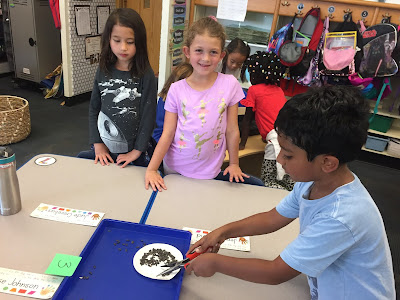We had a great science unit called Birds, Beaks, and Babies. The unit had a STEM design challenge: How can we design a nest that will hold eggs? We spent some time exploring nests and gathering materials around the OB garden, playground, and in our own backyards.
Students explored natural materials first--getting a feel for what might work and what might not work to build a nest using materials in our natural environment.
During the unit, students learned about parents and babies. This included a look at adult plants and babies. Students noted their similarities and differences.
We went out to both gardens to observe and take notes.
Students were able to revise their nest and nesting materials. They used natural materials that they gathered and then added other classroom and house-hold materials that might be good at holding a nest together.
Bird beaks come in all shapes and sizes. This enables them to eat certain kinds of food. Students participated in a simulation where they used various types of tools that imitated birds' beaks. They learned which bird beak worked best for each type of food.
Grabbing worms in the soil
Pinching small seeds
Pinching larger seeds
Scooping up fish
Pointed beaks of wood peckers
Long, slender beaks for reaching into flowers to collect nectar
Students had an opportunity to observe birds on a live nesting camera a few times during the unit.
These observations helped them with their final design challenge.
In the end, the students' nests turned out great and all held eggs.
The science journaling during this unit offered many opportunities for questioning, note-taking, and reflecting.
Birds, Beaks, and Babies was an interesting science unit. We look forward to our next one!






























